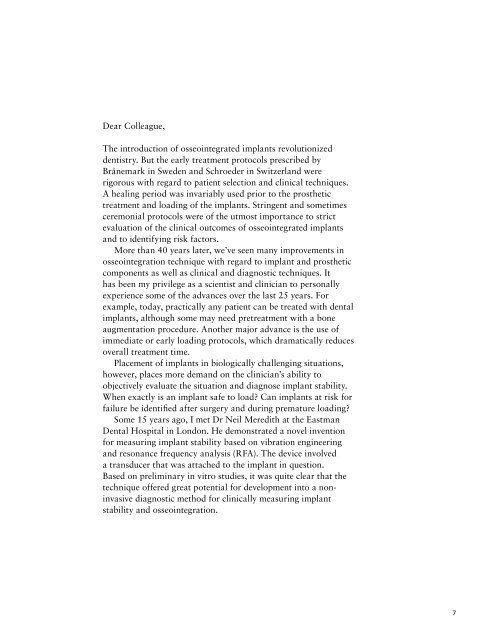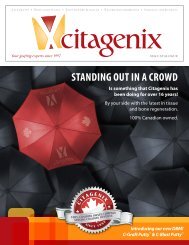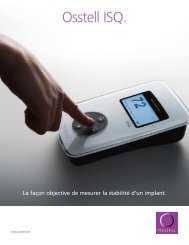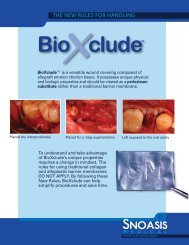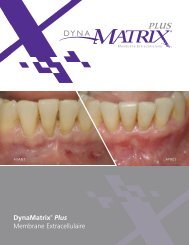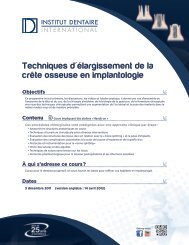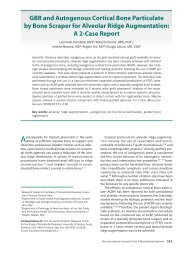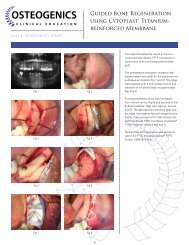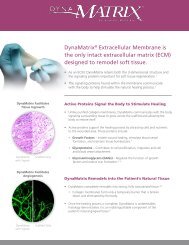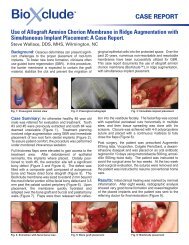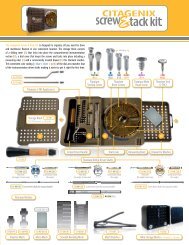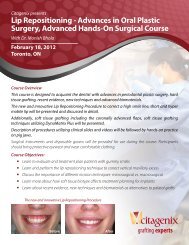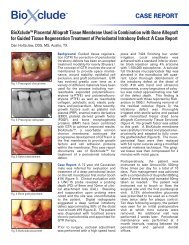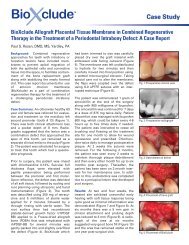The Implant Stability Quotient Whitebook - Citagenix
The Implant Stability Quotient Whitebook - Citagenix
The Implant Stability Quotient Whitebook - Citagenix
- No tags were found...
You also want an ePaper? Increase the reach of your titles
YUMPU automatically turns print PDFs into web optimized ePapers that Google loves.
Dear Colleague,<br />
<strong>The</strong> introduction of osseointegrated implants revolutionized<br />
dentistry. But the early treatment protocols prescribed by<br />
Brånemark in Sweden and Schroeder in Switzerland were<br />
rigorous with regard to patient selection and clinical techniques.<br />
A healing period was invariably used prior to the prosthetic<br />
treatment and loading of the implants. Stringent and sometimes<br />
ceremonial protocols were of the utmost importance to strict<br />
evaluation of the clinical outcomes of osseointegrated implants<br />
and to identifying risk factors.<br />
More than 40 years later, we’ve seen many improvements in<br />
osseointegration technique with regard to implant and prosthetic<br />
components as well as clinical and diagnostic techniques. It<br />
has been my privilege as a scientist and clinician to personally<br />
experience some of the advances over the last 25 years. For<br />
example, today, practically any patient can be treated with dental<br />
implants, although some may need pretreatment with a bone<br />
augmentation procedure. Another major advance is the use of<br />
immediate or early loading protocols, which dramatically reduces<br />
overall treatment time.<br />
Placement of implants in biologically challenging situations,<br />
however, places more demand on the clinician’s ability to<br />
objectively evaluate the situation and diagnose implant stability.<br />
When exactly is an implant safe to load Can implants at risk for<br />
failure be identified after surgery and during premature loading<br />
Some 15 years ago, I met Dr Neil Meredith at the Eastman<br />
Dental Hospital in London. He demonstrated a novel invention<br />
for measuring implant stability based on vibration engineering<br />
and resonance frequency analysis (RFA). <strong>The</strong> device involved<br />
a transducer that was attached to the implant in question.<br />
Based on preliminary in vitro studies, it was quite clear that the<br />
technique offered great potential for development into a noninvasive<br />
diagnostic method for clinically measuring implant<br />
stability and osseointegration.<br />
7


